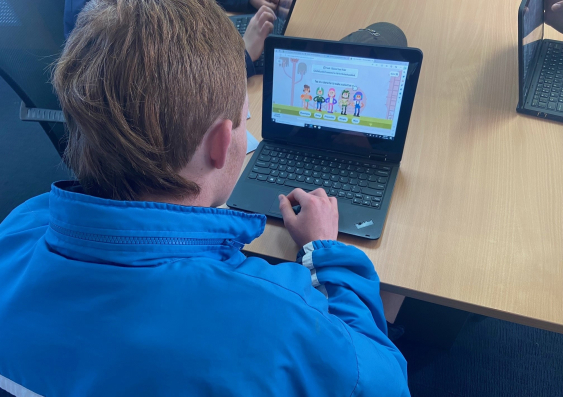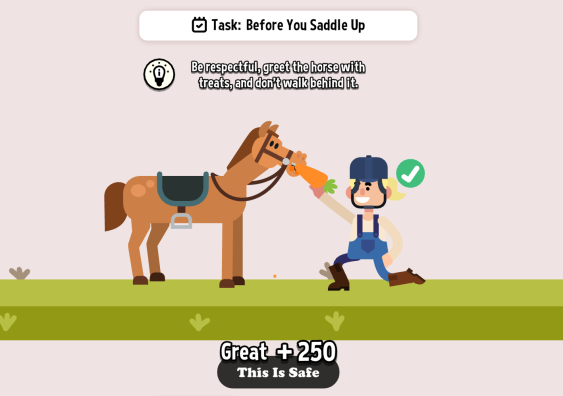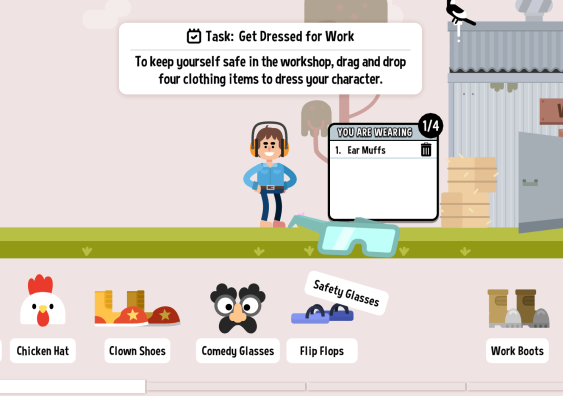Gamifying safety helps teens prevent farm injury
The ‘Calm Your Farm’ game, created through a UNSW Sydney-led research collaboration, increases knowledge and awareness about farm safety.
The ‘Calm Your Farm’ game, created through a UNSW Sydney-led research collaboration, increases knowledge and awareness about farm safety.

Every teenager living in a rural or regional area has a gruesome story about a farm injury. Fingers caught in machinery, a quad bike tipping over, a kick from a horse.
Sometimes the story is tragic, with another young person losing their life.
Several universities have joined forces to create an innovative solution to the problem – a free, online, educational game called ‘Calm Your Farm’. The game enables teenagers to learn about potential hazards in the farm environment and ways to reduce injury risk.
The multi-disciplinary group includes researchers in injury prevention, education and game development from UNSW, the University of Technology Sydney (UTS), James Cook University and the University of Sydney Rural Medical School. This project is supported by the Department of Agriculture, Fisheries and Forestry, through the National Farm Safety Education Fund: Improving Farm Safety Practices grant program.
“Thinking about the next generation of farmers, we saw an opportunity to help that younger adolescent age group while they’re still in school,” says project lead Dr Amy Peden, who is an injury prevention researcher at UNSW Medicine & Health.
During the Vehicles module of 'Calm Your Farm', players learn how to use vehicles like quad bikes more safely. Video: Supplied.
Adolescents are vulnerable to injury in the farm environment, frequently exposed to hazards not typically seen in the home. They are also often given on-farm work responsibilities, more and more as they get older.
“The options for getting injured are broader for this age group. They’re more likely to be seen as a worker, someone who can assist. We also know that this is the age when they start to do things unsupervised by their parents, with their friends instead. The farm is often a home and a workplace, which makes things more challenging from an injury prevention perspective,” Dr Peden says.
It’s difficult to pin down how often farm injuries occur in teenagers. The most recent national data are from the Australian Institute of Health and Welfare (AIHW), showing that from 2010-12 and 2014-15, 22,000 people were hospitalised due to an injury which occurred on a farm. The number of teenagers (10-19 years) was not counted specifically but this is likely in the thousands.
During this project, the researchers held focus groups with students and teachers at agricultural high schools in regional areas of NSW and Tasmania, to better understand the problem of farm injuries and explore potential interventions.
“What was interesting is that nearly everyone knew someone who’d had a pretty horrific injury on the farm, or they’d been injured themselves,” Dr Peden says.
“It’s clear this is a really big issue and we could do better in terms of primary prevention, starting with a fun way to educate.”
According to Dr Peden, teenagers are an when it comes to farm safety education, as well as safety education in general.
“Like many other injury issues, I realised that farm safety and injury prevention is often promoted for very young children or adults. Adolescents get lost in between,” Dr Peden says.
At agricultural high schools, farm safety is covered in the curriculum. However, this typically consists of memorising written content and completing multiple choice questionnaires.
To deliver farm safety education in a more dynamic, interesting way, the researchers decided to create a game that would teach players about safety in the agricultural environment, with input from the students from the focus groups.

During the Paddock module of Calm Your Farm, players learn how to minimise injury risk from potential hazards like horses. Image: Supplied.
“We’ve been the game with these students, so that it’s more appealing to them,” Dr Peden says.
The researchers hope that the game engages teenagers more strongly in farm safety and helps to reduce the number of farm-related injuries.
“Farm injury statistics have not been dropping as fast as other injuries and in some areas have remained stagnant over the last decade,” says Professor Richard Franklin from James Cook University, who has also been driving this project.
“It is hoped that this resource will engage young minds in what can be undertaken to keep people safe on farms.”

Calm Your Farm teaches players how to select appropriate clothing for different environments on the farm. Image: Supplied.
‘Calm Your Farm’ has four modules, based on high-risk areas or hazards on the farm: Vehicles, Workshop, Paddock and Water. Players select a character at the beginning and progress through the modules, completing mini games along the way. The content includes practical information about injury prevention, for example how to ride a quad bike more safely, recognise hazard symbols and select appropriate clothing for different tasks.
“It’s the principle of gamification – you don’t want it to be too easy. You want kids to come back again and keep learning,” Dr Peden says.
During the Water module of the 'Calm Your Farm' game, players can learn how to safely navigate bodies of water on the farm. Video: Supplied.
Once the game was developed, the students in the focus groups had the opportunity to test it out.
“It’s a really fun and engaging game. It was helpful to see where you went wrong and to try again,” said Asha Templeton, a student at Exeter High School in Tasmania.
“We enjoyed playing the game very much – it was very interactive. I thought it was going to be boring, but it was really fun,” said Cleveland Davey, a fellow student at Exeter High School.
Teachers also had the opportunity to provide feedback on the game.
“It’s a great resource for agricultural educators teaching upper primary and high school students. The game was really engaging and the point system inspired some healthy competition in the classroom!” said Sarah Eyb, who is the Coordinator of the Agricultural Centre of Excellence at Orange Anglican Grammar School in NSW’s central west region, and a Vocational Education and Training (VET) teacher for primary industries.
“‘Calm Your Farm’ is a fun way to explore farm safety. It’s not just a game – there’s an important educational meaning behind it,” says Liam Fox, who teaches Agriculture at Exeter High School.
“It links in beautifully with what we are trying to communicate to the students around the fundamentals of farm safety.”
‘Calm Your Farm’ is a curriculum-linked educational resource for the home and classroom, freely available online at . This site includes information for parents and lesson plans for teachers. The game is also well-suited to children with low literacy or English as a second language as it will include text to voice functionality.